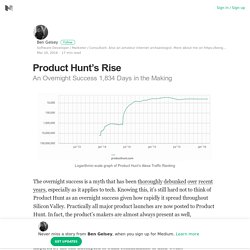

“Monter sa boite pour les Nuls" par le fondateur du Slip Français - Les Echos Start. Comment on s’est fabriqué un fake concurrent pour choper de la croissance. Clientes échaudées par les petits travaux qui tournent au vinaigre et les artisans peu scrupuleux… Emilie et moi avons créé le service de bricolage dont nous rêvions au moment où nous cherchions désespérément un sauveteur pour notre capricieux chauffe-eau.

De notre insatisfaction est née Bricool, la conciergerie du bricolage au petit soin pour tes travaux. Notre objectif? Prendre en main cette corvée pour t’éviter tout tracas et te faire gagner du temps. Notre hantise? Reproduire les austères expériences utilisateur des sites de devis / prestations. Et parce que tout client «aime qu’un plan se déroule sans accrocs», nous considérons nos bricoolers comme l’Agence Tout Risques du dépannage et de la rénovation.
En novembre dernier, Bricool a deux mois. L’idée nous vient lors d’un brainstorming avec Maxime Jacquard. Qu’à cela ne tienne, nous créons donc de toute pièce notre propre concurrent censé canaliser l’attention, www.monbeaubricoleur.com. . #1. . #2. . #3. 5 Growth Hacks from the Rise of Product Hunt. Five days over Thanksgiving weekend.

That’s all it took to launch Product Hunt, the website that’s rapidly becoming the go-to water cooler and discovery tool for product enthusiasts, startup founders, and even venture capitalists. The premise is simple: every day Product Hunt lists the best new products. Visitors can then upvote them and/or leave comments. The more votes a product has, the higher it rises in the list of products for that particular day. So how has a site with such a simple premise, that was built in a matter of days, brought in such stellar results? Over 31,000 email subscribers (with an open rate of 43% and click-through rate of 13%)*150,000 monthly unique visitors (and counting)*Press coverage from TechCrunch (twice), Forbes, and Business InsiderA spot in startup investment program Y Combinator’s latest batch *Numbers courtesy of Forbes In this post, I’m going to break each technique down for you and show how you can apply each one so you can grow your business faster.
Product Hunt’s Rise – Ben Gelsey – Medium. The overnight success is a myth that has been thoroughly debunked over recent years, especially as it applies to tech.

Knowing this, it’s still hard not to think of Product Hunt as an overnight success given how rapidly it spread throughout Silicon Valley. Practically all major product launches are now posted to Product Hunt. In fact, the product’s makers are almost always present as well, commenting in realtime with everyone else. From the outside, Product Hunt’s rise felt like magic. As if this awesome community simply sprung into being. Unfortunately as these would-be founders quickly discovered, there’s a lot more to starting a community site than the idea and technical execution. Even OpenHunt, the response to Product Hunt’s insider controversy which hit the front page of Hacker News twice with heavy mentions in a 3rd front page thread is now dead.
Close to 30,000 unique visitors and yet the site still flopped. 1.) And now, without further adieu, here they are: 1.) 2.) How To Research and Create Target Customer Profiles From Scratch. First things first.

Who are you trying to reach? The best marketing, PR and digital strategies in the world won’t work if you don’t clearly define and understand your target audience. There's no such conventional wisdom that says, simply attempt to appeal to everyone. Marketing requires discipline beginning with eliminating audiences that are less likely to bare fruit.. Ask yourself, who should be on the receiving end of your content, your marketing, your promotion? Creating a content and sales strategy without a clear understanding of your audience is like setting out on a long road trip with no map. Step 1: Quantitative Audience Research The best audience research includes both quantitative and qualitative. Survey Your Audience One piece of quantitative research can be a structured questionnaire with mostly closed questions. With this research, you’re trying to find some basics about your target buyer. Audience Research Using Search and Social Step 2: Qualitative Research Personal.